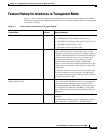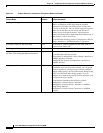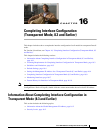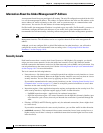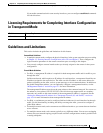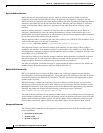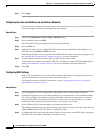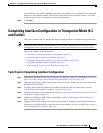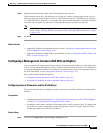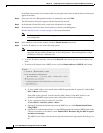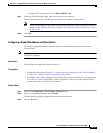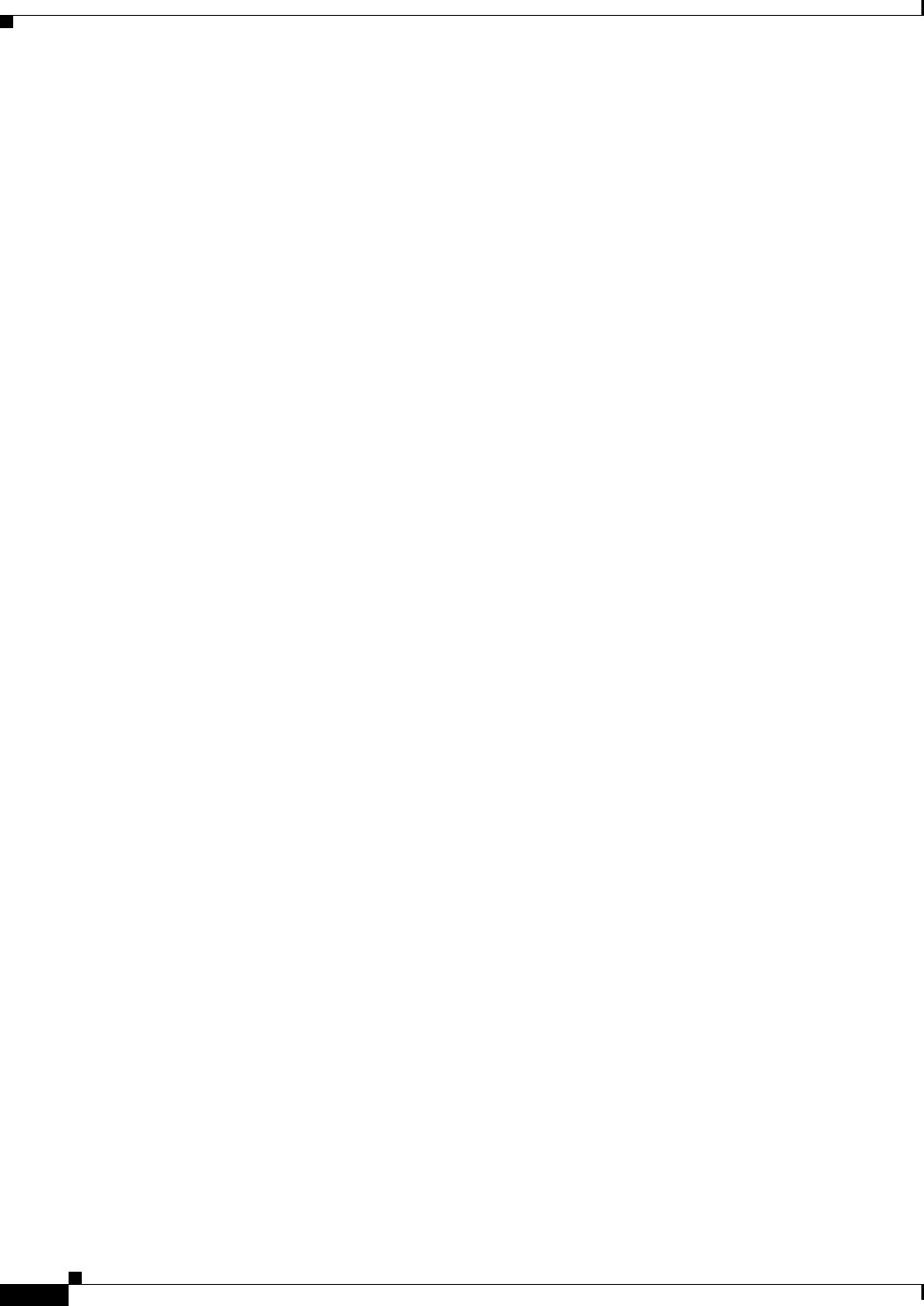
16-6
Cisco ASA 5500 Series Configuration Guide using ASDM
Chapter 16 Completing Interface Configuration (TransparentMode, 8.3 and Earlier)
Setting the Management IP Address for a Transparent Firewall (8.3 and Earlier)
Duplicate Address Detection
During the stateless autoconfiguration process, duplicate address detection (DAD) verifies the
uniqueness of new unicast IPv6 addresses before the addresses are assigned to interfaces (the new
addresses remain in a tentative state while duplicate address detection is performed). Duplicate address
detection is performed first on the new link-local address. When the link local address is verified as
unique, then duplicate address detection is performed all the other IPv6 unicast addresses on the
interface.
Duplicate address detection is suspended on interfaces that are administratively down. While an
interface is administratively down, the unicast IPv6 addresses assigned to the interface are set to a
pending state. An interface returning to an administratively up state restarts duplicate address detection
for all of the unicast IPv6 addresses on the interface.
When a duplicate address is identified, the state of the address is set to DUPLICATE, the address is not
used, and the following error message is generated:
%ASA-4-325002: Duplicate address ipv6_address/MAC_address on interface
If the duplicate address is the link-local address of the interface, the processing of IPv6 packets is
disabled on the interface. If the duplicate address is a global address, the address is not used. However,
all configuration commands associated with the duplicate address remain as configured while the state
of the address is set to DUPLICATE.
If the link-local address for an interface changes, duplicate address detection is performed on the new
link-local address and all of the other IPv6 address associated with the interface are regenerated
(duplicate address detection is performed only on the new link-local address).
The ASA uses neighbor solicitation messages to perform duplicate address detection. By default, the
number of times an interface performs duplicate address detection is 1.
Modified EUI-64 Interface IDs
RFC 3513: Internet Protocol Version 6 (IPv6) Addressing Architecture requires that the interface
identifier portion of all unicast IPv6 addresses, except those that start with binary value 000, be 64 bits
long and be constructed in Modified EUI-64 format. The ASA can enforce this requirement for hosts
attached to the local link.
When this feature is enabled on an interface, the source addresses of IPv6 packets received on that
interface are verified against the source MAC addresses to ensure that the interface identifiers use the
Modified EUI-64 format. If the IPv6 packets do not use the Modified EUI-64 format for the interface
identifier, the packets are dropped and the following system log message is generated:
%ASA-3-325003: EUI-64 source address check failed.
The address format verification is only performed when a flow is created. Packets from an existing flow
are not checked. Additionally, the address verification can only be performed for hosts on the local link.
Packets received from hosts behind a router will fail the address format verification, and be dropped,
because their source MAC address will be the router MAC address and not the host MAC address.
Unsupported Commands
The following IPv6 commands are not supported in transparent firewall mode, because they require
router capabilities:
• ipv6 address autoconfig
• ipv6 nd prefix
• ipv6 nd ra-interval




